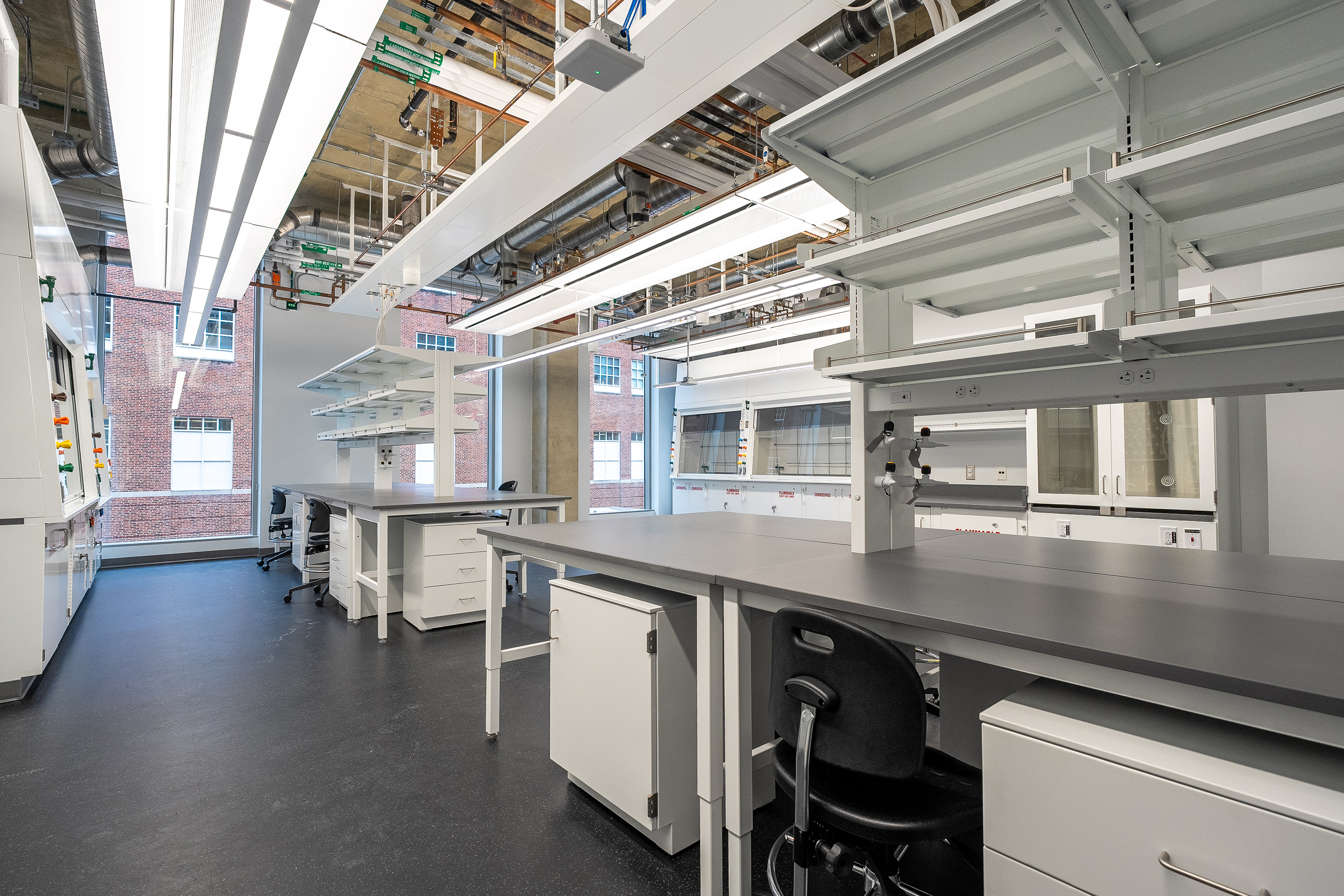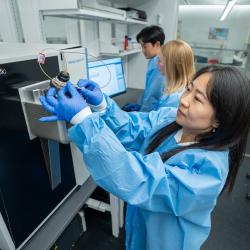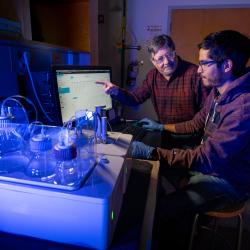University of Maryland Dedicates New Chemistry Building
The University of Maryland today celebrated the dedication of its new state-of-the-art Chemistry Building, a 105,000-square-foot facility that will serve as a hub for quantum chemistry, molecular nanoscience and sustainability research.
"This new facility is a landmark investment in our faculty, staff, students and the future of chemistry and biochemistry at our flagship institution," said UMD President Darryll J. Pines. "I am optimistic for the world-changing collaborations that will begin in these labs and lead to new knowledge and discoveries."
The new Chemistry Building—designed by Ballinger and constructed by the Whiting-Turner Contracting Company with funds from the state of Maryland’s capital budget and the university—catalyzes a new era for chemistry and biochemistry at UMD. The building will support and enhance the work of UMD scientists who are pushing the boundaries of their fields to address the grand challenges of our time, from fighting disease and exploring the future of quantum science to creating a sustainable future.
“Our chemistry and biochemistry students and faculty members will have the tools and technologies they need in this new building to take their discoveries to the next level and ultimately improve our world and drive our economy,” said Amitabh Varshney, dean of the College of Computer, Mathematical, and Natural Sciences.
Key research in the new Chemistry Building focuses on:
- Antibody-based therapeutics and an HIV vaccine
- New materials to tackle urgent problems in energy and sustainability
- Quantum chemistry and quantum signaling
- Mechanisms used by viruses like SARS-CoV-2 to evade defenses
- New materials and technologies for energy conversion and storage or chemical remediation
- Revealing the structure of the viruses that cause Lassa fever and other infectious diseases
- Building novel mass spectrometry instruments to advance cell biology, neuroscience and cancer research
- Detecting ovarian cancer from a blood sample
- Quantum-state controlled chemical reactions under extreme conditions
“Our new Chemistry Building stands out because it is designed purposefully to enable faculty members and students to share ideas, solve problems and ask new questions about our natural world,” said Janice Reutt-Robey, professor and chair of the Department of Chemistry and Biochemistry. “The environmental features of the new building—strict temperature and humidity control, optimal thermal management, and regulated airflow—will allow us to push our research to new heights.”
The $132 million facility includes:
- 34 advanced research labs
- Two shared research facilities with cutting-edge instrumentation
- 13,000 square feet of collaboration space
- A Chemistry Great Hall, where the department’s 45-plus faculty members and 600-plus undergraduate and graduate students will interact and engage with experts through lectures, conferences and celebrations
- Meeting and huddle rooms designed for impromptu discussions, research group meetings and thesis defenses
Thanks to generous philanthropic donations from department alums and current and former faculty members, six rooms in the new building will be named: the Mike and Jan Doyle Seminar Room, GlycoT Conference Room, Sandra C. Greer Seminar Room, Russell Marker Seminar Room, Douglas Kent Shaffer Research Laboratory and Walters Meeting Room.




















